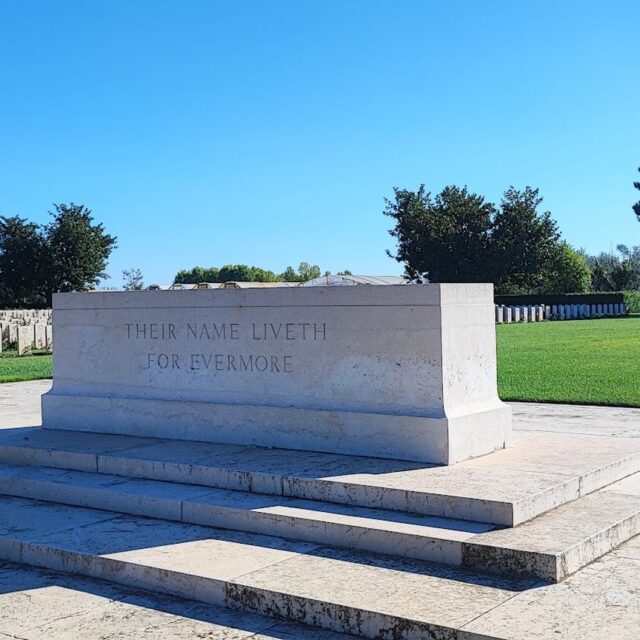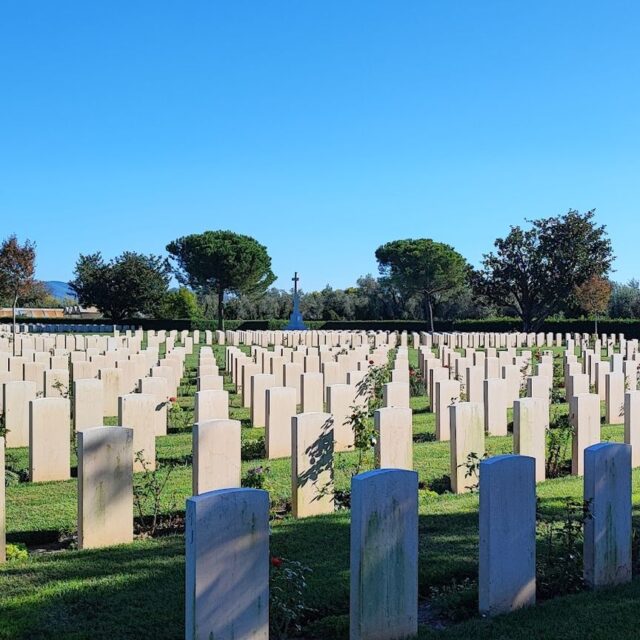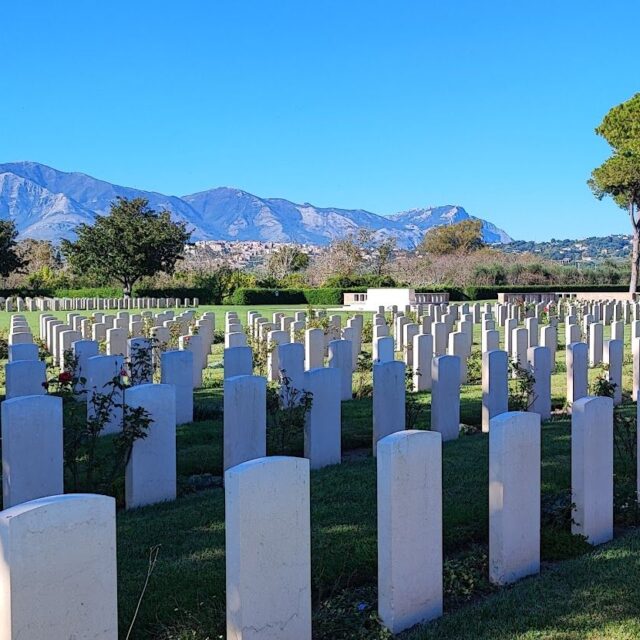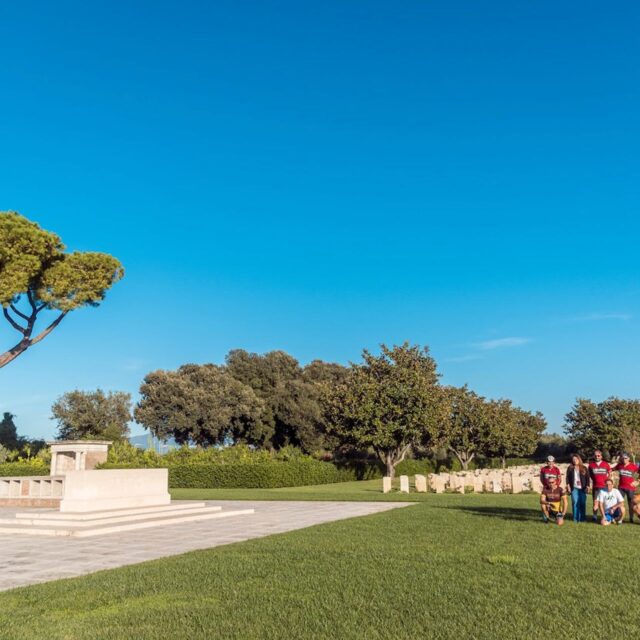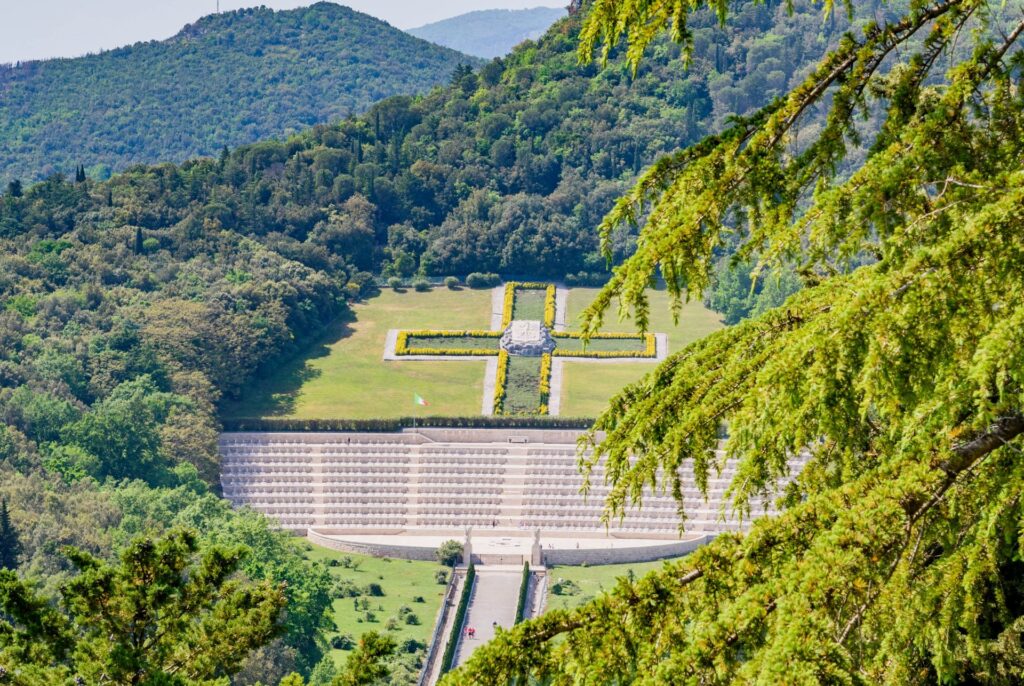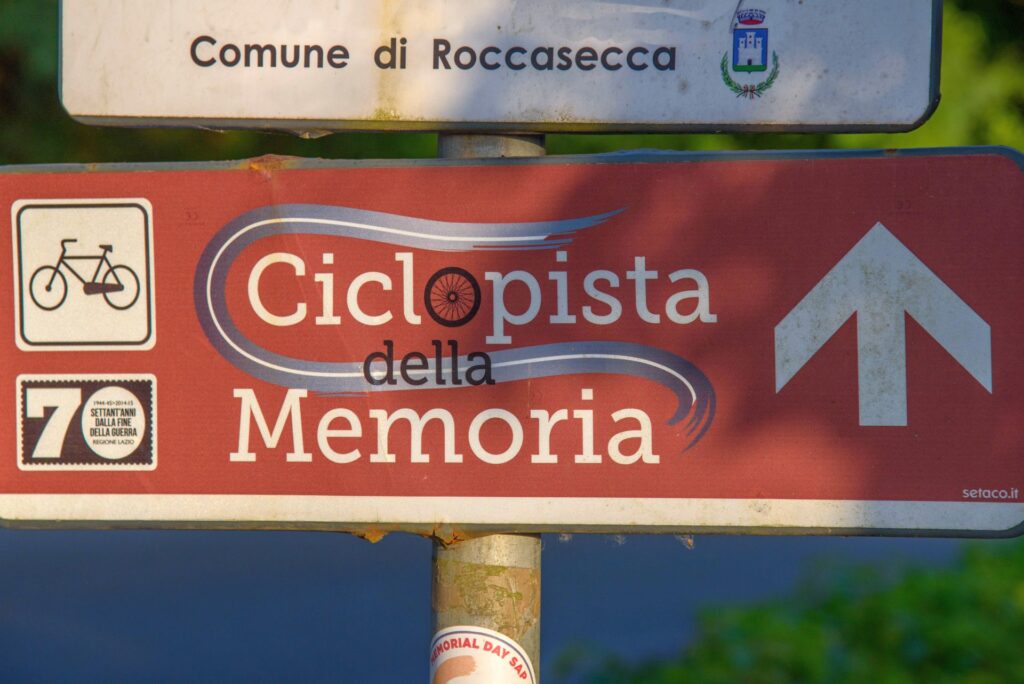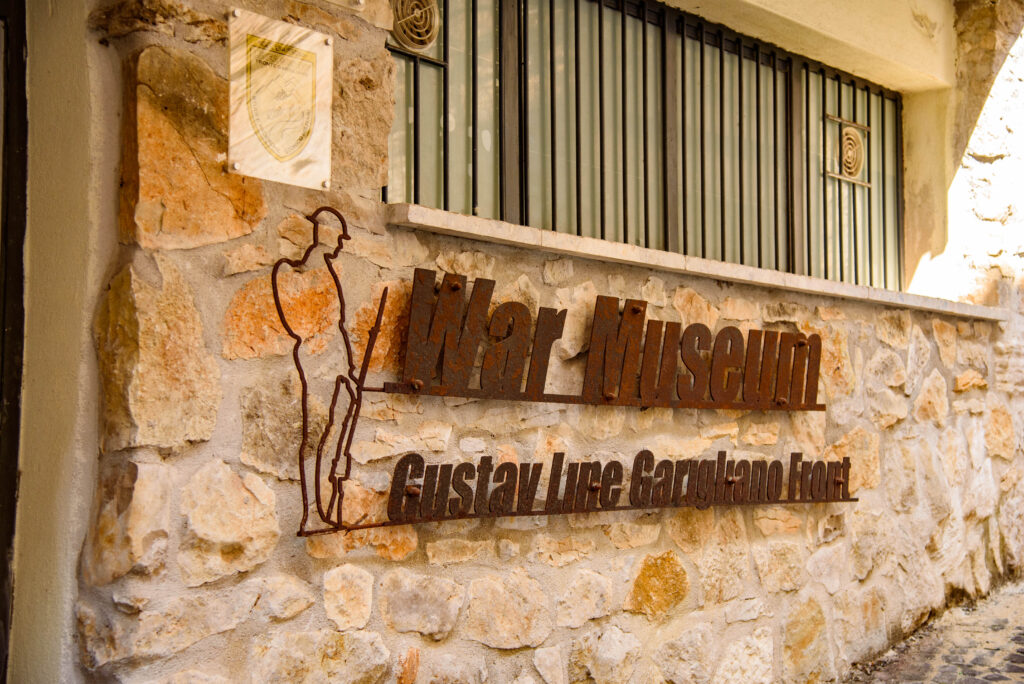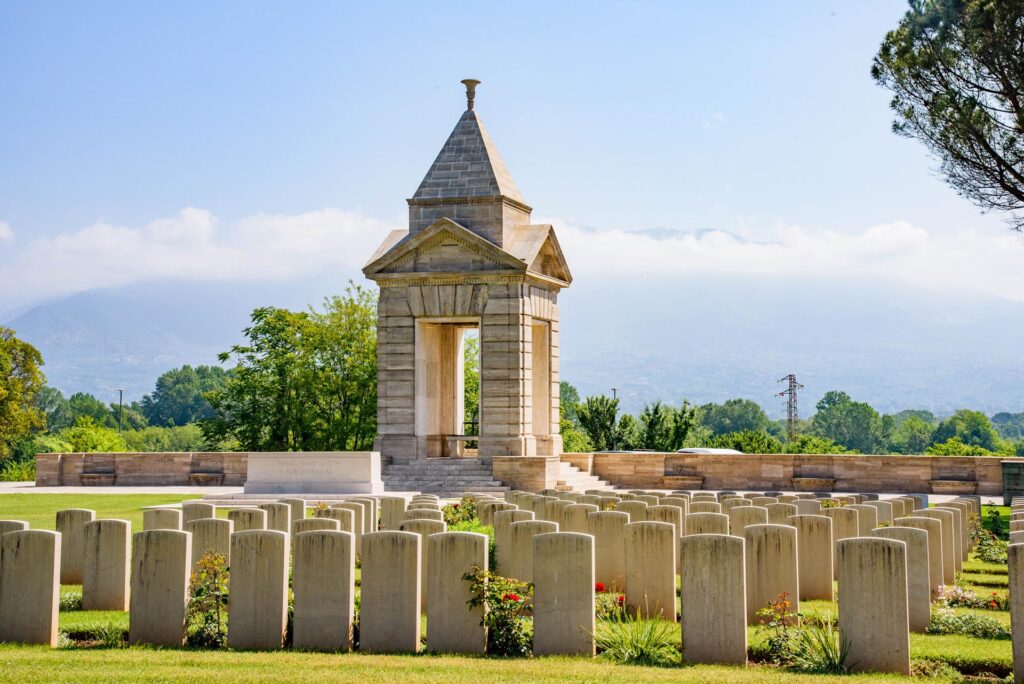WW II – World War II
Minturno
The Minturno War Cemetery
The Minturno War Cemetery is one of 38 military shrines managed by the Commonwealth War Grave Commission in Italy. It is located along the Via Appia, near the Archaeological Park of Minturnae and Ponte Real Ferdinando on the Garigliano river.
It houses 2049 graves of soldiers from Great Britain, Canada, Australia and South Africa, who lost their lives mainly along the banks of the Garigliano River in January 1944. During the Second World War, the area surrounding the cemetery was located along the Gustav Line, the barrage built by German troops to halt the Allied advance towards Rome.
Each grave is marked by a headstone bearing the national emblem or regimental badge, rank, name, unit, date of death, age, religion and a personal dedication chosen by the family.
At the entrance is the ‘Stone of Remembrance’, with the inscription ‘Their name liveth for evermore’. On the opposite side of the entrance is the ‘Cross of Sacrifice’, inspired by the Celtic crosses: it consists of one longer arm and three equal ones, made of limestone with a long bronze sword set on the front face. The cross symbolises the faith of most of the soldiers, while the sword is a reference to the military character of the Cemetery and the Christian concept of sacrifice.
The cemetery was designed by the English architect Louis de Soissons.

